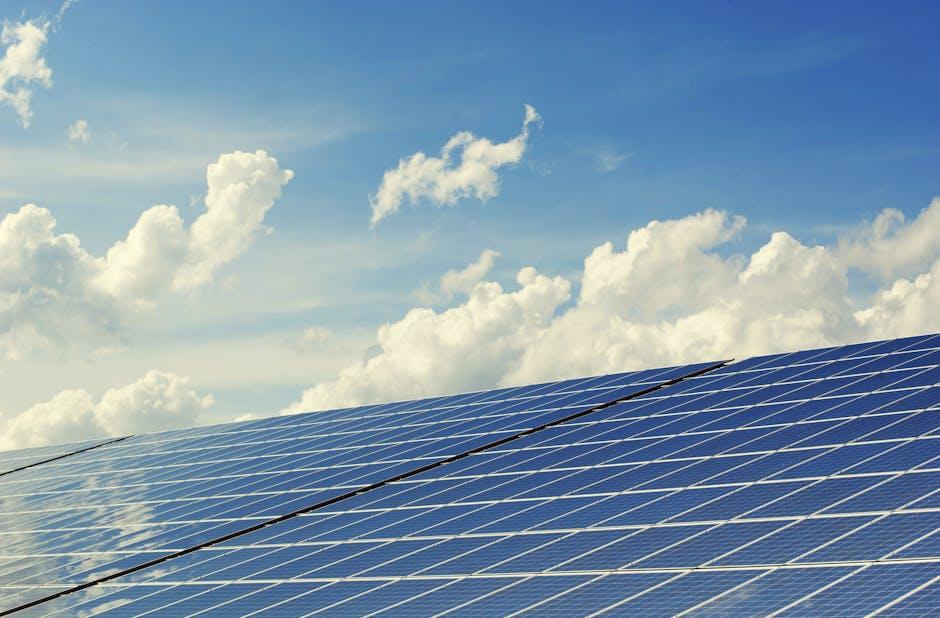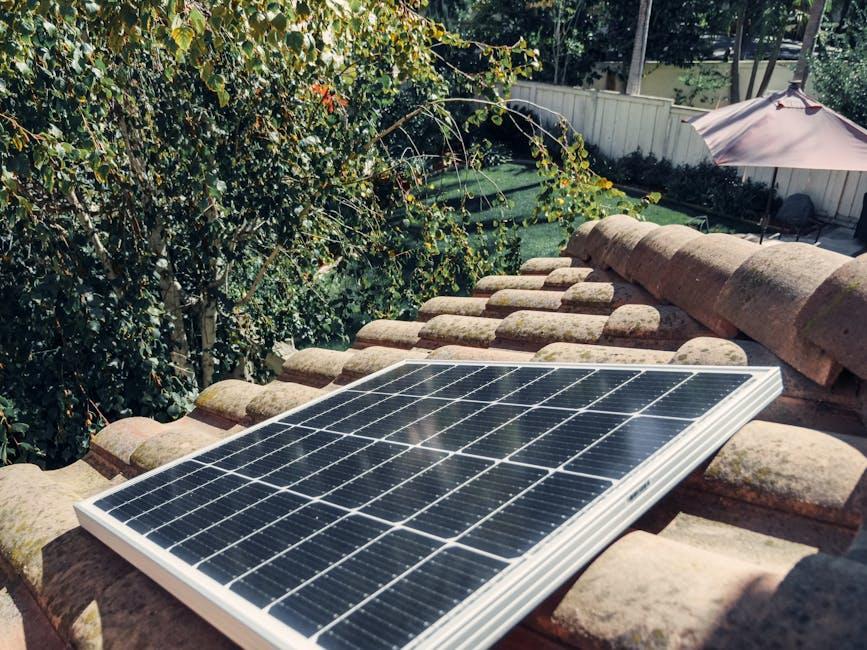In an era where sustainability meets innovation, the fusion of smart grid technology with solar energy systems stands as a beacon of progress. As our world pivots towards cleaner energy solutions, the integration of these two groundbreaking technologies is reshaping the landscape of electricity generation and distribution. Imagine a future where the sun’s rays, harnessed by advanced solar panels, seamlessly interact with an intelligent grid, optimizing energy use and minimizing waste. This harmonious dance between the natural and the technological is not just a vision but a reality in the making. As we delve into the intricacies of this synergy, we explore how smart grids are revolutionizing solar energy, transforming the way we power our lives, and setting the stage for a more sustainable tomorrow.
Harnessing the Sun: Merging Solar Power with Smart Grid Technology
In the quest for a sustainable future, the fusion of solar power with smart grid technology represents a groundbreaking advancement. By integrating photovoltaic systems with smart grids, we can create a more resilient and efficient energy ecosystem. This synergy not only maximizes the utilization of renewable resources but also enhances the grid’s ability to respond to fluctuating energy demands. Key benefits of this integration include:
- Enhanced Energy Efficiency: Smart grids intelligently manage and distribute solar energy, reducing waste and optimizing consumption.
- Improved Reliability: Real-time monitoring and control systems ensure a stable power supply, minimizing outages and disruptions.
- Environmental Impact: By reducing reliance on fossil fuels, the integration contributes significantly to lowering carbon footprints.
As we harness the sun’s power more effectively, smart grids pave the way for a decentralized energy landscape. This paradigm shift not only empowers consumers with greater control over their energy usage but also supports the development of microgrids and community energy initiatives. The innovative integration of these technologies is a pivotal step towards a cleaner, more sustainable energy future, underscoring the importance of investing in smart infrastructure today for a brighter tomorrow.

Balancing the Load: Optimizing Energy Flow in Solar-Integrated Smart Grids
In the realm of modern energy management, effectively balancing energy load within solar-integrated smart grids has become a cornerstone of innovation. Optimizing energy flow requires a keen understanding of both technology and nature’s rhythms. As solar panels capture the sun’s bounty, the energy must be deftly managed to ensure seamless distribution. This is where the brilliance of smart grid technology shines, allowing for real-time adjustments and intelligent decision-making.
- Dynamic Demand Response: Smart grids adjust to fluctuations in energy demand, optimizing usage and reducing wastage.
- Energy Storage Solutions: Battery systems store excess solar energy, ensuring a steady supply even when the sun isn’t shining.
- Predictive Analytics: By analyzing patterns, smart grids anticipate energy needs, minimizing strain on the system.
- Decentralized Energy Management: Localized control systems empower communities, enhancing resilience and reliability.
By weaving these elements together, smart grids transform the way we interact with renewable energy, crafting a future where power is not just consumed but intelligently orchestrated.

Overcoming Challenges: Ensuring Seamless Integration and Reliability
Integrating solar energy systems into the smart grid presents a set of complex challenges that demand innovative solutions to ensure both seamless integration and reliability. Key obstacles include variability in solar power generation due to weather conditions, the need for robust communication protocols, and maintaining grid stability. Addressing these challenges requires a multifaceted approach that combines technological advancements with strategic planning.
One of the most effective strategies involves the deployment of advanced energy storage systems, such as lithium-ion batteries, which can store excess solar energy for use during periods of low sunlight. Other strategies include:
- Smart inverters that optimize power conversion and grid interaction.
- Demand response programs that adjust energy usage based on grid needs.
- Advanced data analytics for predicting solar output and grid demand.
- Real-time monitoring systems to quickly address any disruptions.
These solutions, when effectively implemented, not only enhance the reliability of the power supply but also facilitate a more sustainable and efficient energy ecosystem. As technology evolves, continued innovation will be essential to overcoming these hurdles and ensuring the harmonious coexistence of solar energy systems within the smart grid infrastructure.

Future Prospects: Advancing Smart Grid Innovations with Solar Energy
As the global energy landscape evolves, the synergy between smart grids and solar energy systems promises a future of enhanced efficiency and sustainability. Innovations in smart grid technology are enabling a more dynamic integration of solar power, allowing for real-time data analysis and optimized energy distribution. This transformation is crucial in managing the fluctuating nature of solar energy, ensuring that excess power can be stored or redirected as needed, thereby reducing waste and enhancing reliability.
Key advancements that hold potential for revolutionizing this integration include:
- Advanced Energy Storage Solutions: These technologies are pivotal in storing surplus solar energy, making it available during periods of low sunlight.
- Predictive Analytics: Utilizing AI and machine learning to forecast energy demand and solar power generation, allowing for proactive grid management.
- Blockchain Technology: Facilitating peer-to-peer energy trading, enabling communities to share solar power efficiently.
- Enhanced Grid Resilience: Implementing smart sensors and automated controls to swiftly respond to outages or disruptions, ensuring continuous energy flow.
By embracing these innovations, the potential for a cleaner, more sustainable energy future becomes increasingly attainable, setting a precedent for energy systems worldwide.
To Wrap It Up
As we stand on the brink of an energy revolution, the integration of smart grids with solar energy systems illuminates a path toward a more sustainable and efficient future. This synergy not only promises to optimize energy distribution but also empowers individuals and communities to take charge of their energy consumption like never before. While challenges remain, the continuous advancements in technology and collaborative efforts across sectors fuel optimism for a resilient and adaptable energy landscape. As we continue to harness the power of the sun and the intelligence of smart grids, we are reminded that the future of energy is not just about innovation, but about creating a harmonious balance between nature and technology. Let us embrace this transformative journey with open minds and a shared vision for a brighter tomorrow.

































